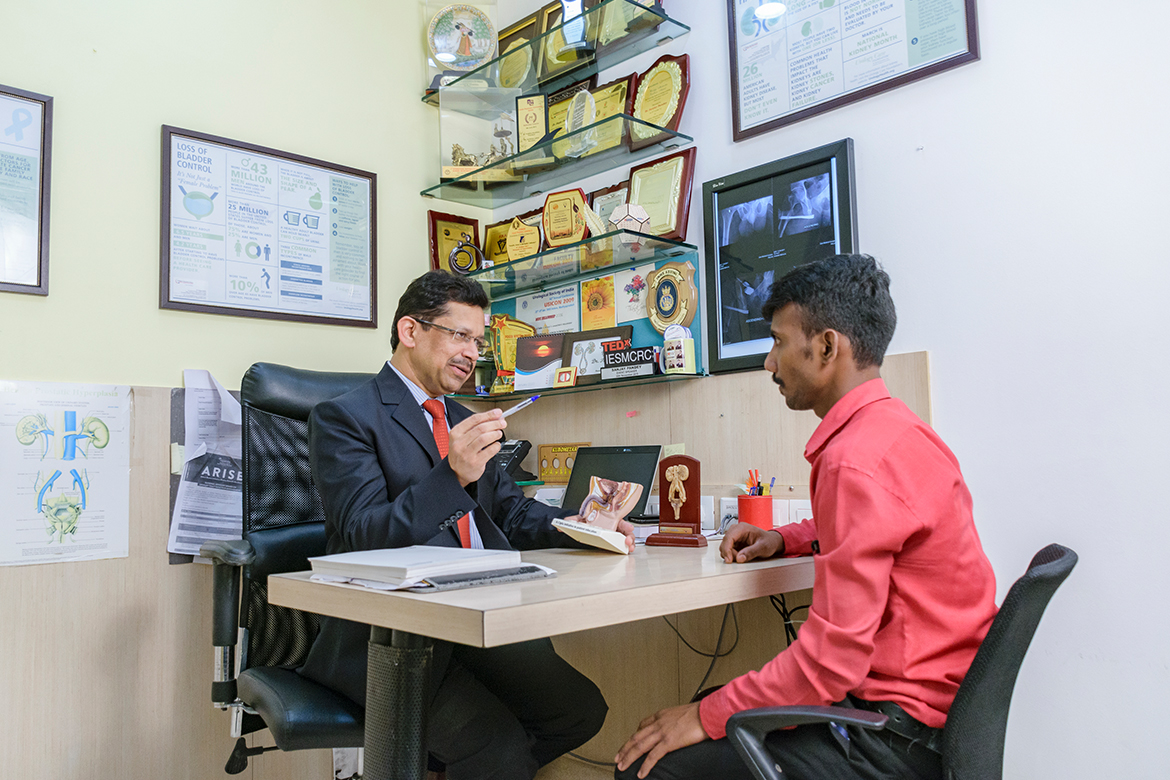Stress incontinence is when urine leaks because there is a sudden extra pressure within the abdomen on the bladder. This pressure (or stress) is caused by coughing, laughing, sneezing or exercising (such as running or jumping). Weakened pelvic floor muscles cannot support the bladder and urethra so well. The pressure is too much for the bladder outlet to withstand and so urine leaks out. Small amounts of urine may leak, but sometimes it can be quite a lot and can cause embarrassment.
Overall this is observed in about 4 in 100 adults, and well over half of these are due to stress incontinence. Stress incontinence becomes more common in older women. As many as 1 in 5 women over the age of 40 have some degree of stress incontinence with affected quality of life.
HIGH RISK GROUP
- Female gender
- Childbirth
- Injury to the urethra
- Some medications
- Surgery in the prostate or pelvic area
- Coughing over a long period of time (such as chronic bronchitis and asthma)
- Ageing
- Obesity
- Smoking
Importance of Screening
During a basic diagnostic work-up, the doctor looks for clues that may also indicate contributing factors. The exam will likely include:
- A medical history
- A complete physical examination with particular focus on the abdomen and genitals
- A urine sample to test for infection, traces of blood or other abnormalities
- A neurological exam to identify sensory problems
- A urinary stress test, in which the doctor observes urine loss like when the patient coughs
Specialised Tests
The doctor may order urodynamic tests, which are used to assess the function of the bladder. Common tests include:
- Measurements of postvoid residual urine
using catheter drain or ultrasound scan - Measuring bladder pressure
via cy stometr y. This procedure, when combined with a voiding study, indicates whether the muscle that connects the urethra to the bladder (urinary sphincter) exerts enough pressure to keep the urethra closed as bladder pressure rises - Creating images of the bladder as it functions
with video urodynamics using either X-ray or ultrasound waves to create pictures of the bladder as it fills or empties. This test is often combined with cystometry
Various Methods of Management
Treatment depends on how severe your symptoms are and how much they affect your everyday life.
Treatment for stress incontinence include:
- Behaviour changes
- Medication
- Pelvic floor muscle training
- Surgery
Behaviour changes, pelvic floor exercise therapy and medication usually improve symptoms. However, they will not cure stress incontinence. Surgery can cure patients, if they are good candidates.
At Kokilaben Hospital, along with state-of-theart technology and infrastructure, we have an Incontinence Team with a vast experience in open and minimally invasive surgeries
 Back to Site
Back to Site